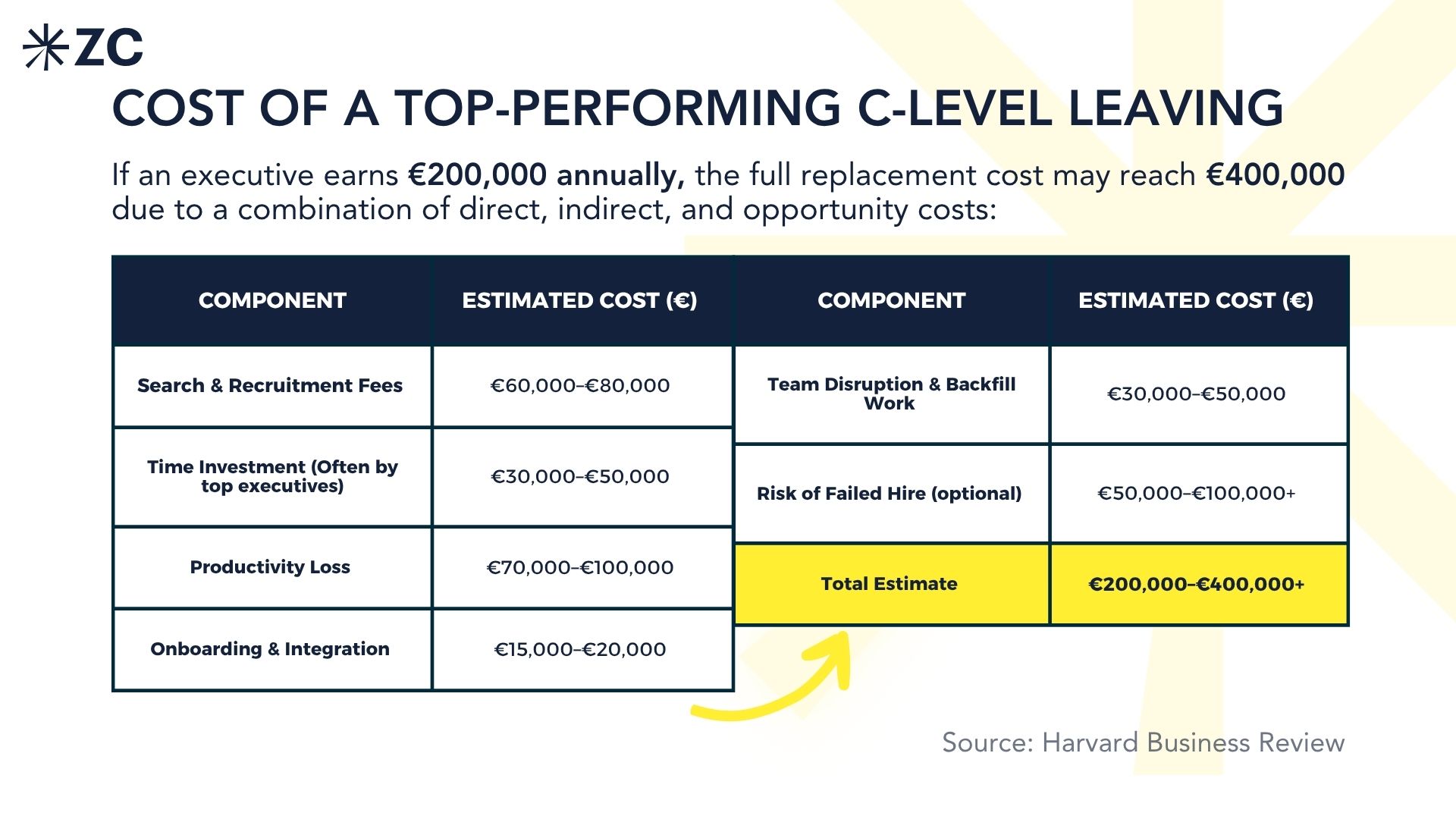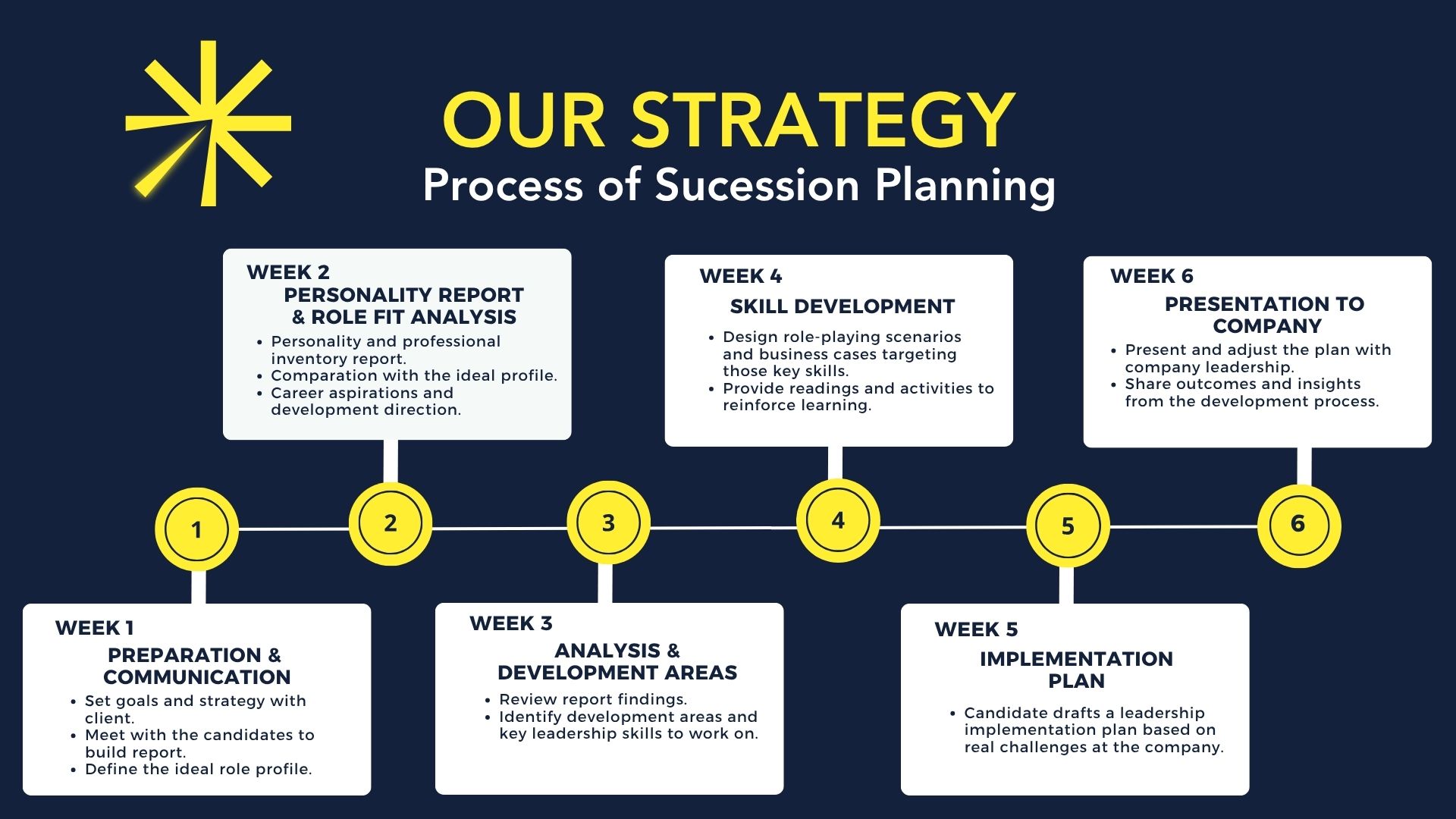On the last webinar we presented, which I had the pleasure of co-presenting with Javier Alonso Solá, we explored the essential principles of effective succession planning. We explored the common challenges organizations face as well as the reasons it must be integrated into any long-term strategic agenda aiming to ensure leadership continuity and resilience.
Some interesting facts on Succession Planning:
- 51% of companies have no identified CEO successor (Stanford GSB).
- 70% of global executives acknowledge they are unprepared for abrupt leadership changes (Deloitte).
- Internally promoted leaders demonstrate a 25% higher retention rate over two years (Gartner).
- Nevertheless, only 22% of organizations have a formal succession plan for the COO role, revealing a considerable disconnection between perceived importance and actual implementation.
The Hidden Costs of Executive Departures:
Replacing a high-performing C-level executive can entail costs of up to €400,000 when recruitment, integration, operational disruption, and mis-hire risks are taken into account. As we highlighted during the webinar, unexpected leadership transitions can have a significant impact on both business performance and the broader economic stability of the organization.


Beyond the C-Suite: A Broader Perspective.
Succession planning should not be confined to the top tier of leadership. As Javier Solá noted, “C-1 to C-3 positions form the operational core of any organization.” Overlooking succession in these layers can lead to structural fragility and executional gaps.
Frequent Missteps
- Confusing ownership with leadership: Emotional ties may obscure rational talent decisions.
- Focusing on a sole successor: Overdependence on a single candidate increases strategic vulnerability.
- Limited board engagement: Effective succession planning requires active governance oversight.
Recommended Practices for succession planning:
- Begin Early: Succession must be embedded in performance metrics and reviewed periodically.
- Define Success Profiles: Establish objective, role-specific benchmarks to assess candidate readiness.
- Develop Internal Talent: Offer high-potential employees diverse, stretch assignments to build readiness.
- Promote Exposure: Encourage future leaders to engage with boards and senior leadership forums.
Evaluating the success of a strong succession plan:
- Readiness assessments and leadership potential matrices (i.e. 9 Box Grid)
- Average time to fill senior roles (optimal range: 30–60 days)
- Long-term retention rates of promoted executives (i.e. % Of promotions that stay within the first 3 yrs)
If you are amongst the 49% of businessess without a CEO Succession, we presented a recommended approach: Javier and I outlined a six-week methodology combining behavioral assessments, strategic business simulations, and implementation plans for the future. This structured process equips potential successors with both foresight and executional acumen.


Succession planning should not be viewed as a contingency exercise, but rather as a proactive investment in the continuity, resilience, and adaptability of leadership.
As Javier aptly remarked, “Succession is not a risk to manage—it is a responsibility to lead.” Organizations that act early and deliberately will be best positioned to sustain performance across generations. Click here to get in contact with us.


Fernando Zavala de Carvajal
Fernando Zavala is a global leader in executive search and a seasoned entrepreneur with over 16 years of experience across Asia, Europe, and the Americas. He founded Zavala Civitas, with offices in Shanghai and Barcelona, and previously launched IntuuChina, an award-winning placement firm. Recognized among Spain’s top 10 consultants, Fernando brings deep expertise in international talent strategy.








